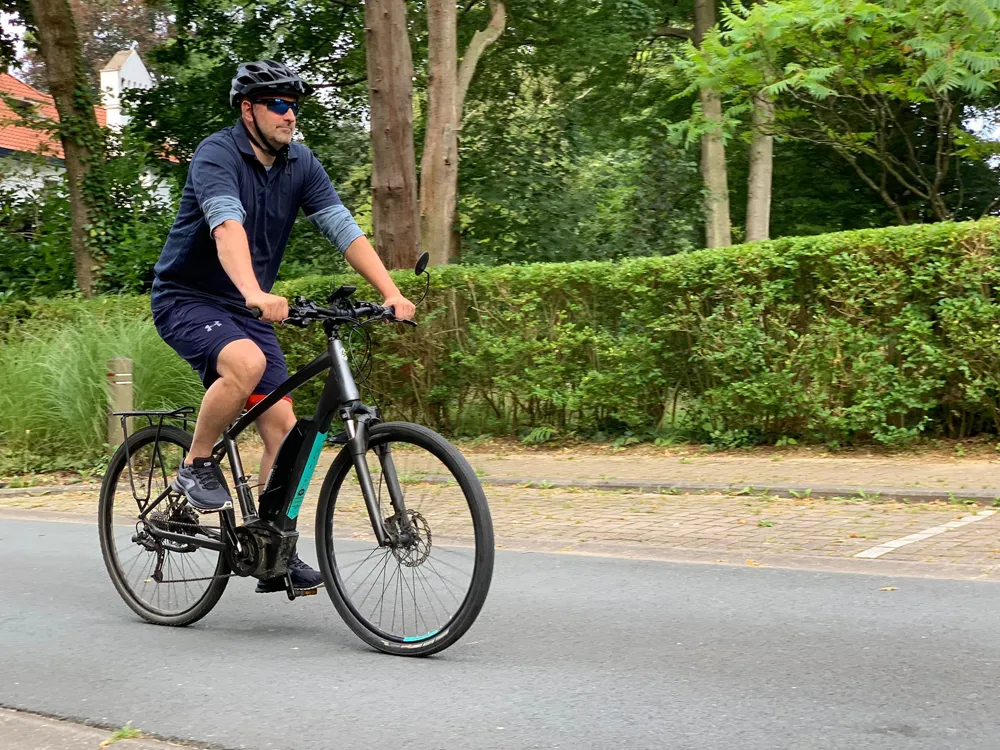Dutch company PAL-V Europe has concluded test flights of its flying car, the PAL-V (Personal Air and Land Vehicle). The patented vehicle flies in the air like a gyrocopter with lift generated by an auto-rotating rotor and forward speed is produced by a foldable push propeller on the back. On the road it drives like a sports car. No new infrastructure is required because it uses existing roads and airstrips.
April 3, 2012
Read time: 3 mins
Dutch company 4731 PAL-V Europe has concluded test flights of its flying car, the PAL-V (Personal Air and Land Vehicle). The patented vehicle flies in the air like a gyrocopter with lift generated by an auto-rotating rotor and forward speed is produced by a foldable push propeller on the back. On the road it drives like a sports car. No new infrastructure is required because it uses existing roads and airstrips.
A team of top engineers has been working on the first prototypes. Renowned institutes such as the Dutch National Aerospace Laboratory and Delft University were involved in the development. The driving prototype was fully tested in 2009 and now the flying-driving prototype made its first flights. The PAL-V complies with existing regulations in all major markets, so the vehicle is allowed both in road traffic and in the air.
Robert Dingemanse, CEO and co-founder of PAL-V commented: "We are very proud to announce this successful maiden flight of the PAL-V and we now invite investors to create the future with us. We know there is a lot of interest for the PAL-V. Prior to announcing these test flights, we were already approached on a daily basis by potential customers and dealers wanting to be part of this exciting project."
A PAL-V offers the choice of flying like a plane or driving like a car. This means fast door-to-door mobility for private individuals as well as professionals and organisations. The flying range will be between 350 km (220 miles) and 500 km (315 miles), depending on the type and pay load. Driving, a PAL-V, which accelerates like a sports car, will have a range of about 1,200 km (750 miles). It runs on gasoline and there will also be versions that use biodiesel or bio-ethanol. It can reach speeds of up to 180 km/h (110 miles/h) both on land and in the air.
On the ground, the company claims the aerodynamic, three-wheeled vehicle combines the comfort of a car with the agility of a motorcycle thanks to its patented, cutting-edge, 'tilting' system.
Flying, a PAL-V is like a standard gyrocopter. It is quieter than helicopters due to the slower rotation of the rotor. It takes off and lands with low speed, cannot stall, and is very easy to control. The company claims this makes a PAL-V one of the safest types of aircraft. Obtaining a licence requires only 20 to 30 hours of training.
It is possible to land a PAL-V practically anywhere. For take-off, a strip of 165 meters (540 feet) is enough and it can be either paved or grass. Now that the final product development phase has been reached, PAL-V Europe will invite new investors to fund the development of the commercial product and the market launch.
According to PAL-V Europe, the flying car is a dream cherished for almost 100 years, and will be a revolution in door-to-door transportation similar to the transition from horse-and-buggy to the automobile. It says governments are already preparing for increasing traffic with Personal Air Vehicles like the PAL-V. In the US and in Europe government-funded programmes are determining the infrastructure of 'digital freeways' to provide safe corridors using GPS technology.
A team of top engineers has been working on the first prototypes. Renowned institutes such as the Dutch National Aerospace Laboratory and Delft University were involved in the development. The driving prototype was fully tested in 2009 and now the flying-driving prototype made its first flights. The PAL-V complies with existing regulations in all major markets, so the vehicle is allowed both in road traffic and in the air.
Robert Dingemanse, CEO and co-founder of PAL-V commented: "We are very proud to announce this successful maiden flight of the PAL-V and we now invite investors to create the future with us. We know there is a lot of interest for the PAL-V. Prior to announcing these test flights, we were already approached on a daily basis by potential customers and dealers wanting to be part of this exciting project."
A PAL-V offers the choice of flying like a plane or driving like a car. This means fast door-to-door mobility for private individuals as well as professionals and organisations. The flying range will be between 350 km (220 miles) and 500 km (315 miles), depending on the type and pay load. Driving, a PAL-V, which accelerates like a sports car, will have a range of about 1,200 km (750 miles). It runs on gasoline and there will also be versions that use biodiesel or bio-ethanol. It can reach speeds of up to 180 km/h (110 miles/h) both on land and in the air.
On the ground, the company claims the aerodynamic, three-wheeled vehicle combines the comfort of a car with the agility of a motorcycle thanks to its patented, cutting-edge, 'tilting' system.
Flying, a PAL-V is like a standard gyrocopter. It is quieter than helicopters due to the slower rotation of the rotor. It takes off and lands with low speed, cannot stall, and is very easy to control. The company claims this makes a PAL-V one of the safest types of aircraft. Obtaining a licence requires only 20 to 30 hours of training.
It is possible to land a PAL-V practically anywhere. For take-off, a strip of 165 meters (540 feet) is enough and it can be either paved or grass. Now that the final product development phase has been reached, PAL-V Europe will invite new investors to fund the development of the commercial product and the market launch.
According to PAL-V Europe, the flying car is a dream cherished for almost 100 years, and will be a revolution in door-to-door transportation similar to the transition from horse-and-buggy to the automobile. It says governments are already preparing for increasing traffic with Personal Air Vehicles like the PAL-V. In the US and in Europe government-funded programmes are determining the infrastructure of 'digital freeways' to provide safe corridors using GPS technology.










